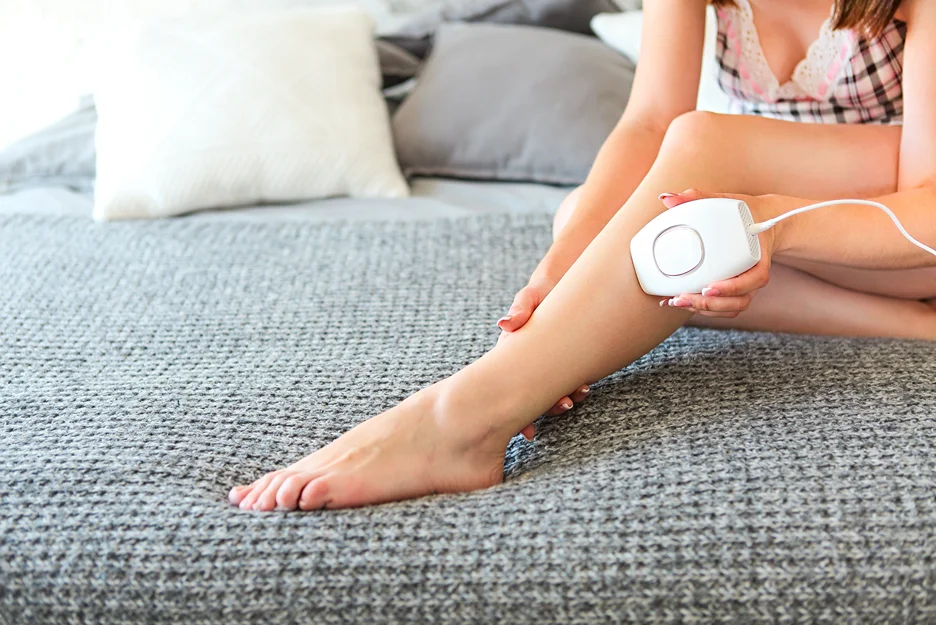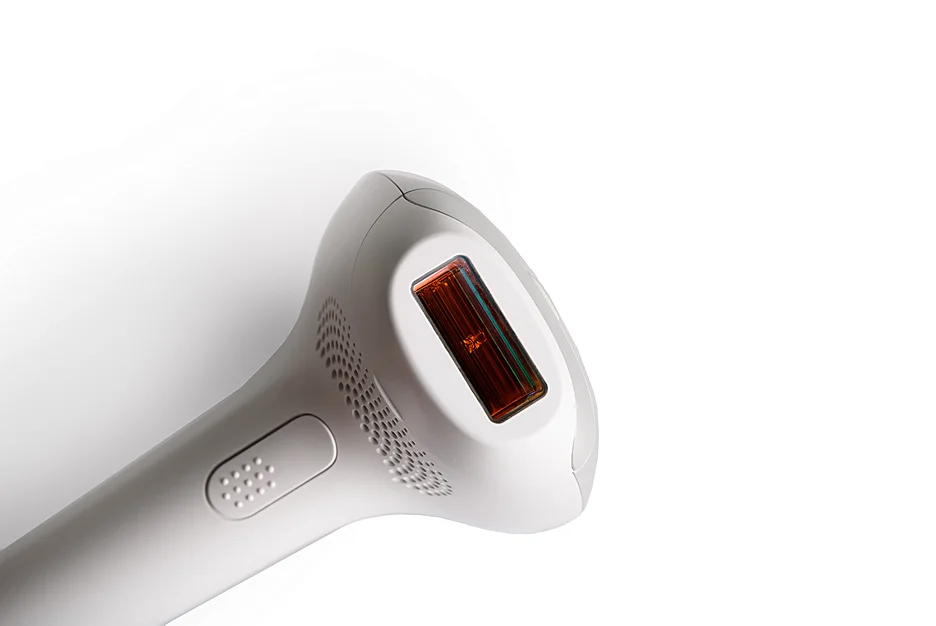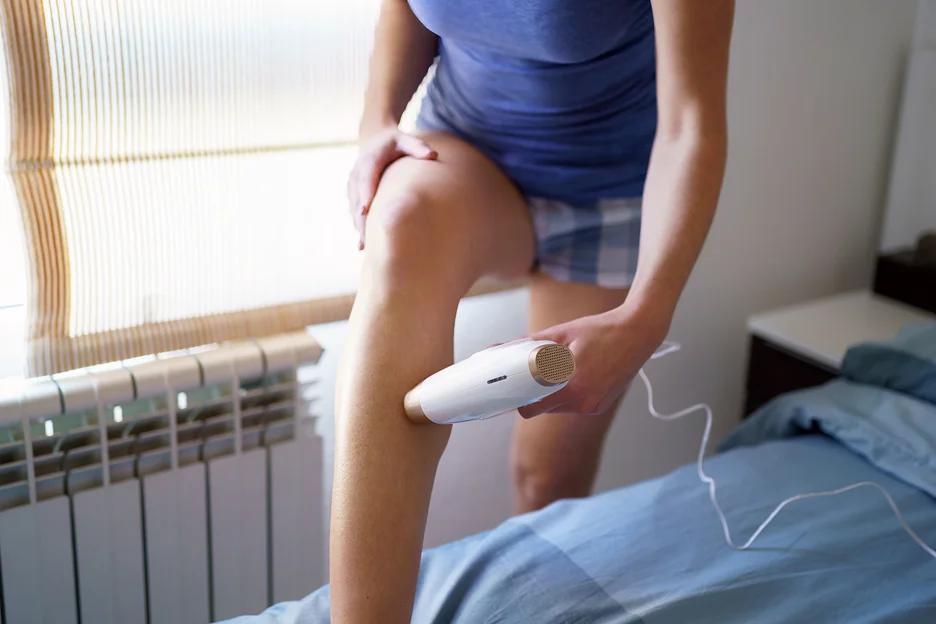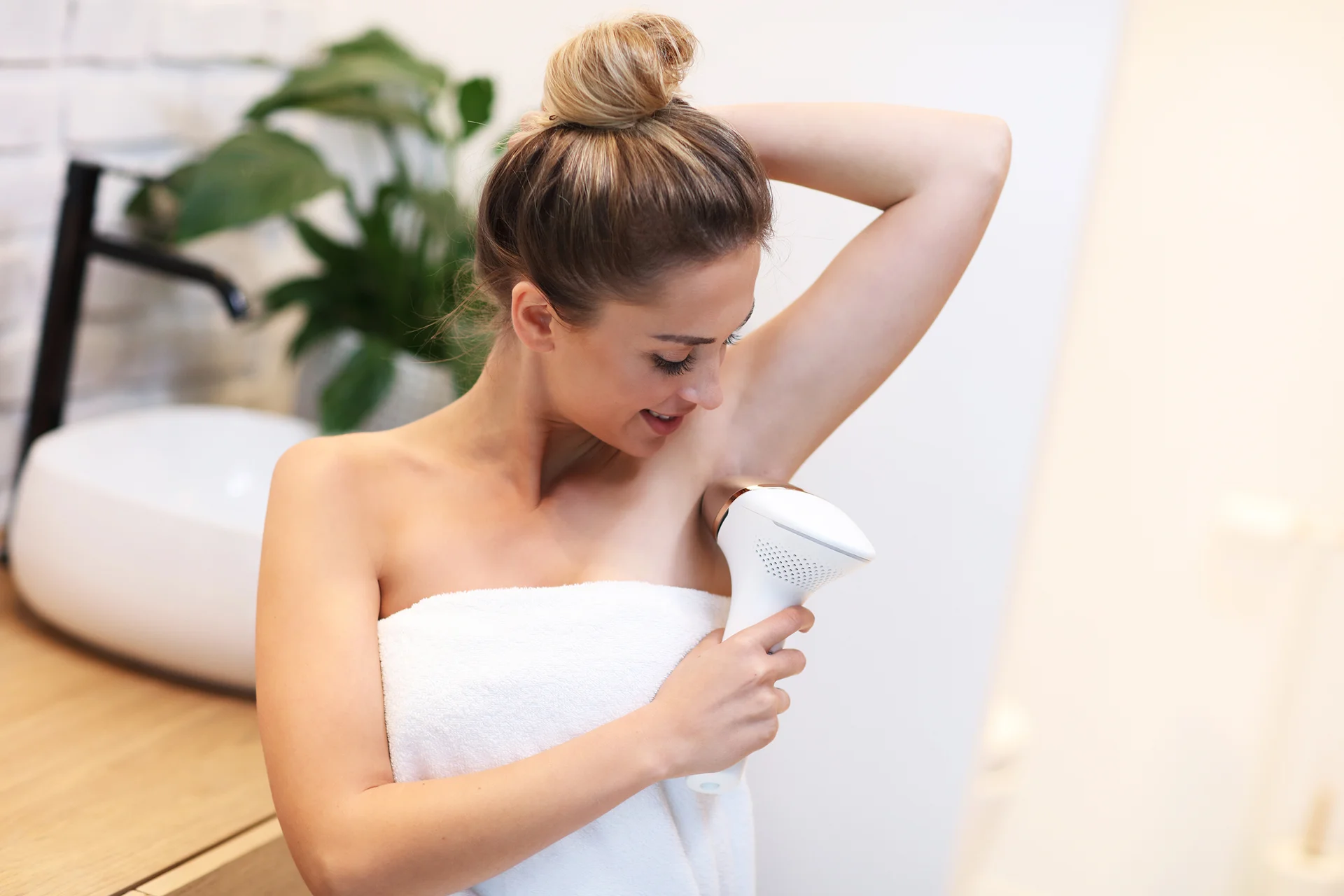Discover the truth about home laser hair removal – is it safe? Get all the facts before you try it!
Have you ever wondered about the safety of home laser hair removal? With the market for at-home beauty devices growing rapidly, it’s no surprise that the demand for laser hair removal at home is also on the rise.
According to the latest statistics from the American Society for Dermatologic Surgery (ASDS), it’s become the most common minimally invasive cosmetic procedure performed by their members.
In 2021 alone, over 850,000 laser hair removal procedures were carried out, marking a staggering 58% increase since 2019. This trend highlights the growing desire for long-lasting hair removal solutions, as many people ditch razors and embrace the smoother, hair-free lifestyle laser technology offers.
How Laser Hair Removal Works

If you’re curious about how laser hair removal works, understanding the fundamental principle of light energy and its interaction with hair follicles is crucial.
In dermatology, lasers emit concentrated light at specific wavelengths. These wavelengths are drawn to the melanin pigment in hair follicles. When the light is absorbed, it transforms into heat energy, damaging the follicle and impeding further growth.
The efficacy of laser hair removal is influenced by the contrast between hair and skin color. It’s more effective for individuals with dark hair and light skin, as the greater melanin content in dark hair provides a better target for the laser, while lighter skin reduces the risk of unintended damage.
Understanding these principles is essential for individuals seeking to undergo laser hair removal treatments.
Evaluating the Safety of Home Lasers

When evaluating the safety of home lasers for hair removal, it’s important to consider the potential risk of burns or skin damage, as well as the differences from in-office lasers.
Understanding the FDA approval and oversight of these devices can provide insight into their safety and effectiveness.
Taking recommended precautions, such as performing a patch test and following the manufacturer’s instructions, is crucial in ensuring safe and successful at-home laser hair removal.
Risk of Burns or Skin Damage
Appropriate use of home laser hair removal devices is crucial in order to minimize the risk of burns or skin damage. When using these devices, it’s important to follow instructions carefully and consider the following risks:
- Skin Damage: Improper use of home laser hair removal can result in damage to the skin, including burns, blisters, or discoloration.
- Risk Factors: Those with dark skin tones are at higher risk of experiencing skin damage from laser hair removal.
- Safety Measures: Understanding the appropriate energy levels and treatment techniques can help mitigate the risk of skin damage.
- Consultation: It’s advisable to consult with a dermatologist before using home laser hair removal, especially if you have sensitive skin or any underlying skin conditions.
- Monitoring: Regularly inspecting the skin for any signs of irritation or damage following laser hair removal treatments is essential for early intervention.
Differences from In-Office Lasers
Comparing the safety of home laser hair removal devices to professional in-office lasers requires an understanding of their differences, particularly in terms of power and the level of expertise required for operation.
Home lasers are generally less powerful than the medical-grade lasers used in professional settings, which can have higher intensities. This means that while home devices are designed to be safe for consumer use, they may not be as effective on certain hair types or skin tones as the technology used by trained professionals.
Professionals receive extensive training to operate lasers safely, ensuring that the treatment is tailored to individual needs and minimizing the risk of adverse effects.
Therefore, the expertise and technology available in an in-office setting provide a different level of safety and effectiveness compared to home hair removal devices.
FDA Approval and Oversight
While the differences in power and expertise between home laser hair removal devices and professional in-office lasers are important to consider, it’s crucial to note that the FDA approval and oversight of home-use laser hair removal devices play a significant role in evaluating their safety and efficacy.
The FDA approves home-use laser hair removal devices after evaluating their safety and efficacy through a rigorous approval process.
The FDA conducts ongoing monitoring of these devices to track their performance and any adverse events reported. This oversight ensures that the home laser hair removal devices meet certain safety standards and continue to be safe for consumer use.
As a result, consumers can have confidence in the safety and effectiveness of FDA-approved home laser hair removal devices.
Recommended Precautions
To ensure the safety and effectiveness of home laser hair removal, it is essential to follow recommended precautions to evaluate the suitability of these devices for your specific skin type and needs.
Before treatment, avoid tanning to prevent skin damage and complications. Apply proper skin cooling before, during, and after the procedure to minimize discomfort and reduce the risk of burns. It’s crucial to use correct light intensities suitable for your skin type to prevent adverse reactions.
Wearing protective eyeglasses during the treatment is necessary to shield your eyes from potential harm. Lastly, carefully follow all device instructions to ensure safe and successful at-home hair removal.
| Precautions | Details |
| Avoid Tanning | Prevents skin damage and complications |
| Proper Skin Cooling | Minimizes discomfort and reduces burn risk |
| Correct Light Intensities | Prevents adverse reactions based on skin type |
Making Sure Home Laser Hair Removal Is Right for You

Before diving into home laser hair removal, it’s essential to consult a dermatologist if you’re unsure about whether it’s right for you.
Doing a patch test before embarking on full treatment can help you gauge your skin’s reaction and tolerance.
Make sure to adjust the device settings properly and manage your expectations for gradual results over time.
Consult a Dermatologist If Unsure
If you’re unsure about whether home laser hair removal is the right choice for you, consulting a dermatologist can provide personalized advice tailored to your skin type and specific concerns.
Meeting with a dermatologist ensures that you make an informed decision about the safety and suitability of home laser hair removal for your skin.
Here are some reasons why meeting with a dermatologist is important:
- Meet with a skin specialist to evaluate the best hair removal options for you.
- Get personalized advice for your specific skin type and condition.
- Have any pigmentation concerns or risks assessed by a professional.
- Learn about the safety of home laser hair removal for your individual situation.
- Understand any potential side effects or complications that may arise from home laser hair removal.
Do a Patch Test Before Full Treatment
Consider conducting a patch test before proceeding with full home laser hair removal treatment to ensure its suitability for your skin.
This small test area, usually on a hidden part of your body, allows you to assess any adverse effects on your skin. It’s essential, especially if you have a history of skin conditions or are using a new laser diode.
The patch test also familiarizes you with the device settings and the procedure, giving you a preview of what to expect during the full treatment.
This precautionary step helps you gauge the safety and effectiveness of home laser hair removal specifically for your skin type, ensuring a more informed decision before committing to the entire process.
Adjust Device Settings Properly
To ensure the safety and effectiveness of home laser hair removal for your skin type, it’s crucial to adjust the device settings properly, following guidelines for your specific skin type to avoid burns and starting at lower intensities, gradually working up as tolerated.
Here are some important steps to help you adjust your home laser hair removal device settings properly:
- Consult the user manual for specific instructions on adjusting settings for your skin type.
- Start with the lowest intensity setting recommended for your skin type.
- Gradually increase the intensity only if your skin tolerates the treatment without discomfort.
- Always perform a patch test on a small area before treating a larger area to ensure your skin can tolerate the selected settings.
- If you experience any pain or discomfort during the treatment, stop immediately and adjust the settings or seek professional advice.
Expect Gradual Results Over Time
After adjusting your home laser hair removal device settings properly, you can expect gradual results over time as you assess whether home laser hair removal is the right choice for you. The process of achieving the desired results from home laser hair removal takes time and patience.
Human hair growth occurs in cycles, and the therapy is most effective when targeting actively growing hairs. It’s essential to maintain realistic expectations for permanence, as full clearance typically requires several treatments.
The effectiveness of home laser hair removal can vary based on skin color, with certain devices being more suitable for lighter skin tones.
As a patient, it’s crucial to understand that gradual results are normal and to remain consistent with the treatment plan to achieve the best outcomes.
Frequently Asked Questions
Can Home Laser Hair Removal Be Used on All Skin Types and Hair Colors?
Yes, home laser hair removal can be used on various skin types and hair colors. However, it’s essential to ensure the device is suitable for your specific skin tone and hair color to achieve safe and effective results.
What Are the Potential Long-Term Effects of Using Home Laser Hair Removal Devices?
Using home laser hair removal devices may cause potential long-term effects such as skin discoloration, burns, and scarring. It’s crucial to follow safety guidelines, conduct skin patch tests, and consult a dermatologist for personalized advice.
Are There Any Specific Medical Conditions That May Make Someone Ineligible for Home Laser Hair Removal?
If you have certain medical conditions like pregnancy, epilepsy, or active skin infections, you may be ineligible for home laser hair removal. Always consult a healthcare professional before using these devices to ensure safety.
Is It Safe to Use Home Laser Hair Removal on Sensitive Areas Such as the Face or Bikini Line?
When using home laser hair removal on sensitive areas like the face or bikini line, it’s important to follow safety guidelines and perform a patch test. If done correctly, it can be safe and effective for these areas.
How Often Should Home Laser Hair Removal Treatments Be Performed for Optimal Results?
For optimal results, you should perform home laser hair removal treatments every 4-6 weeks. This allows the hair to be in the active growth phase, giving the laser the best opportunity to effectively target and destroy the hair follicle.
Final Thoughts

Home laser hair removal can be safe when used properly and with the right precautions.
It’s important to carefully evaluate the safety of the device and ensure it’s suitable for your skin type and hair color.
Consulting with a professional and following all instructions is key to minimizing the risks associated with home laser hair removal.
Always prioritize safety and consult a dermatologist before starting any at-home hair removal treatments.







